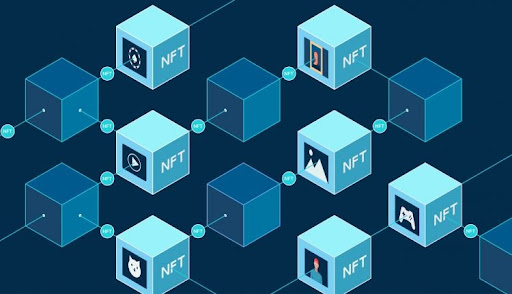Knowing what crypto art and NFTs are is key to being well-versed in the future of contemporary art.

From the cryptocurrency circle, internet and pop culture, and traditional art, the crypto art market is multifaceted and complex. It merges contrasting topics and fields and draws conflicting opinions. Knowing what crypto art and NFTs are is key to being well-versed in the future of contemporary art. Why is everyone talking about crypto art and NFTs? What does this modern movement mean for art and creators going forward?
What Is Crypto Art?
Blockchain encodes smart contracts that allow the art’s creator to receive continual compensation each time the work changes hands.
As with other crypto assets – cryptocurrencies such as Ethereum and Bitcoin -individual crypto art pieces are distinguished by blockchain records of timestamped transaction data. NFT stands for non-fungible token. So unlike cryptocurrency, NFT’s are not interchangeable. The blockchain technology authenticates a piece of crypto art’s ownership, origin, and transfer conditions.
Even amid the potential to create an infinite number of perfect replications of an art piece’s digital files, a crypto artwork’s original copy is definitively identifiable. Blockchain encodes smart contracts that allow the art’s creator to receive continual compensation each time the work changes hands.
Those who have achieved large-scale success in crypto art have almost exclusively been established figures and artists. Selling NFTs for huge profits usually requires a substantial internet fanbase. Various celebrities and internet icons have cashed in on the expanding blockchain art market. And for crypto art that is artistic in the more traditional sense, the artwork fetching millions has benefitted from major institutional support.

Why Crypto Art Like NFTs Is Important
Many skeptics and critics minimize the crypto digital art and NFT boom as a fleeting trend. But so far, some reports estimate the crypto art marketplace valuing at billions of dollars by the end of 2021.
NFT’s are expected to vastly change video games so that users are able to genuinely own, sell, and profit from virtual objects and spaces within games. A cryptopunk, a simple gaming avatar image titled CryptoPunk 7804 just sold for $7.5 million dollars. The seller has dubbed the crypto digital art piece the ‘Mona Lisa of Digital Art’ and considers it the foremost icon of crypto art. An 18-year-old Las Vegas painter gained rapid wealth and notoriety partnering with sneaker brands and selling digital ‘prints.’
Many skeptics and critics minimize the crypto digital art and NFT boom as a fleeting trend. But so far, some reports estimate the crypto art marketplace valuing at billions of dollars by the end of 2021.
Crypto art and NFTs are redefining art as a profitable asset. The fine art marketplace has been a highly exclusive place, but the ability to pay in cryptocurrency for art is attracting a revolutionary new crowd of art collectors and gallerists. Individuals within the cryptocurrency scene view the NFT and crypto art market as a new, up-and-coming source of highly lucrative investments.
Crypto art and NFT’s may be fundamentally transforming the art scene. Enthusiasts hope that the ability to digitally trade art will reduce the international travel normally involved in art collecting. Therefore, the digitalization of art trading may represent a chance to reduce the industry’s environmental impact.
The crypto art market is extremely competitive. But proponents of the crypto art movement celebrate it as a democratic and equitable pathway to success for artists and collectors alike. They say it eliminates systemic barriers that have traditionally operated to gatekeep entry into the exclusive art world.
What Crypto Art Means for Artists
This revolutionary art marketplace largely symbolizes a growing alternative art scene. In many ways, it could be the start of a less institutionalized, less formal climate for artists.
Though many consider the crypto digital art market to be a democratizing force, the traditional art environment is yet to fully embrace crypto art. Fine art can exist in the form of NFTs, but (arguably) not all NFTs are truly classifiable as ‘art.’
The crypto art market is creating more opportunities and inroads for genuinely talented artists to gain profit and recognition for their work. But that does not mean just anyone can make millions off any random digital file. It generally still takes widespread reputation or cultural influence. What the crypto art and NFT craze highlights is the fascinating way the internet has fueled artists’ dissemination of passionate fan bases and unique communities.
This revolutionary art marketplace largely symbolizes a growing alternative art scene. In many ways, it could be the start of a less institutionalized, less formal climate for artists. More and more artists may begin to see crypto art as the best possible path to success. For them, it would be crucial to have a deep understanding of internet subcultures and attitudes.
These emerging trends are likely to increasingly inform artists’ voices in ways that resonate with their audience, including the next generation of crypto art collectors. In the crypto sphere, becoming a marketable creator and cultivating an online following will become an increasing part of the artist’s’ role.
One of the most promising outcomes of crypto art and NFTs is their ability to ensure creative rights and compensation. Artists and creators have an exciting chance to sidestep restrictive institutions and stock agencies.
Blockchain technology traces every transfer of an individual asset. Creators can receive payment every single time collectors buy and sell their work. The exchange of creative works in every medium, from visual art to music and video can benefit the original artist with unprecedented fairness, directness, comprehensiveness, and reliability.
Is Crypto Art Here to Stay?
Because blockchain is so reliable at identifying, tracking, and verifying transactions and files, it is considered the safest way to transfer digital data.
For the art community, the blockchain art market may solve problems surrounding ownership and authenticity. NFTs may also have long-term viability as a financial investment.

The benefit of crypto art is that blockchain encrypts fragmented and decentralized records across millions of devices. There is no single source where the complete version of the information lies. Therefore, it would be nearly impossible for hackers to steal, falsify, or corrupt the files.
Because blockchain is so reliable at identifying, tracking, and verifying transactions and files, it is considered the safest way to transfer digital data. Just like with a painting or a song, imitations and duplicates can appear. But crypto art, like cryptocurrencies, offer unprecedented security as an investment. Counterfeits are easily identifiable and thus useless to attempt.

